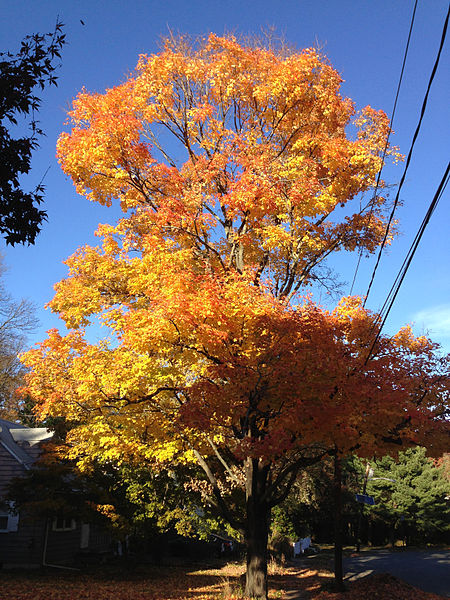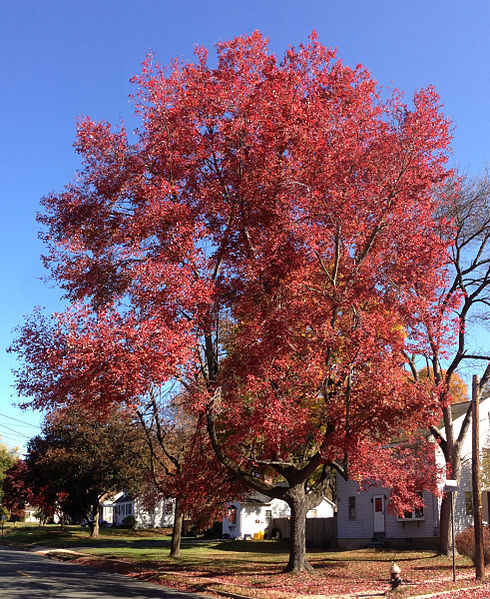Maple Trees
Of the 128 species of maples, there are three main species of trees that produce enough sap used to create maple syrup and each one can live to be over 200 years old. Click on the images below to learn more about each maple tree.

Sugar Maple
- Sugar Maple (Acer saccharum) - produce the highest volume and sugar concentration of maple sap.
- Range: Northeast US, Southeast Canada, and upper Midwest US
- Leaf: Smooth leaves that are 3 -6 inch wide and have a five palmate (hand-shaped pattern)
- Bark: Young bark is typically gray and smooth, but as the tree matures it turned gray-brown and develops plates
- Twig: Shiny, brown and slender

Red Maple
- Red Maple (Acer rubrum) - lower sugar content and not as productive as the sugar maple, but still able to be tapped.
- Range: Much of the US east of the Mississippi River, and , Southeast Canada.
- Leaf: Three-lobed with shallow v-shaped sinuses and fine toothed edges, about 2-6 inches wide, turn vibrant reds in the fall
- Bark: Young bark is typically gray and smooth, but as the tree matures it darkens and develops board scaly plates
- Twig: Shiny, brown and slender, with small red flower cluster blooms that appear in spring

Black Maple
- Black Maple (Acer nigrum) - lower maple sap than the sugar and red maple.
- Range: Main range is in the lower Midwest US, less common elsewhere
- Leaf: Smooth leaves that are 4-5 inch wide and have 3-5 palmate (hand-shaped pattern) lobes that will droop downward.
- Bark: Bark is grayish brown or grayish black, and becomes rough and irregularly furrowed as the tree matures
- Twig: Various shades of gray and brown, covered with air pores